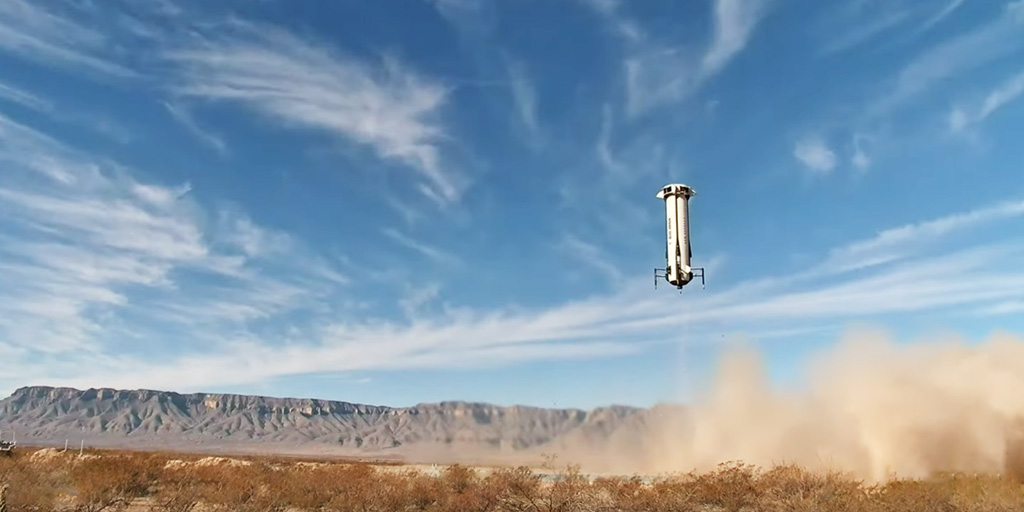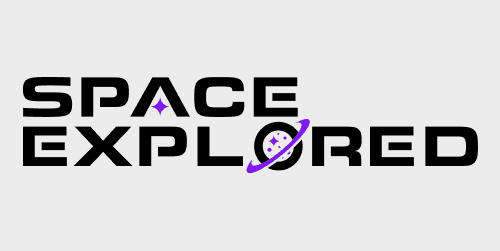
Tuesday morning, Blue Origin launches its 29th New Shepard mission from West Texas. While the missions have become rather mundane, this time the company was able to spin the capsule up to simulate lunar gravity for the payloads it carried.
At 10:00 A.M. CT at its launch site in West Texas, Blue Origin launched its New Shepard NS-29 mission. The suborbital and uncrewed flight carried with it 30 payloads from NASA and other research institutions. The capsule also carried thousands of postcards, part of Blue Origin’s non-profit, Club for the Future.
Of those 30 payloads, 17 were sponsored by NASA as part of its Flight Opportunities program, which works with both Blue Origin and Virgin Galactic on suborbital research missions. The bulk of the NASA payloads dealt with the Moon, as the agency is still operating under the previous directive to return to the Moon as part of the Artemis Program.
To better accommodate these missions, Blue Origin was able to use the spacecraft’s reaction control thrusters to spin it up to 11 revolutions per minute. This successfully simulated lunar gravity in the midpoint of New Shepard’s cargo lockers.
This was the first time New Shepard performed this maneuver, and if this becomes a regular offering by the company, it would open up a new option for researchers looking to test theories of lunar operations, an area that has become popular even if the government is threatening to move its sights to Mars.
Watch Blue Origin NS-29
NS-29 Payloads
Here are some payloads we found interesting that flew on Blue Origin’s NS-29.
Electrodynamic Regolith Conveyor (ERC)
Researchers at NASA’s Kennedy Space Center are assessing a technology designed to move lunar regolith particles using dynamic electric fields generated by placing alternating high voltage on electrodes of the conveyor surface rather than conventional rotating or vibrating actuation. This dust-tolerant technology is designed to enable future in -situ resource utilization operations on the Moon. This technology is supported by NASA’s Game Changing Development program (see below) and received technical support from the University of Central Florida (UCF).
Honey Bubble Excitation Experiment (H-BEE)
Honeybee Robotics is testing a system to evaluate the physics of transporting granular material into bubbles formed within viscous material. Using honey as a viscous simulant for molten regolith and compressed gas for evolved oxygen, researchers aim to improve current methods of extracting oxygen from regolith, an important oxygen source on the Moon. The goal is to test extraction methods in lunar gravity using a safe, simple, and cost-effective platform.
Material Flamability: Lunar-G Combustion Investigation (LUCI)
NASA’s Glenn Research Center researchers together with Voyager Technologies are also assessing the flammability of solid materials in lunar gravity. Observing the flame fronts of multiple samples at a variety of gravity accelerations, the payload records flame velocity images, radiant emissions, temperatures, and product gas concentrations. These moderate-duration flammability tests aim to provide guidance for rating the many materials anticipated to be used inside crewed spaces on the Moon, which will improve crew safety. The goal is to determine the conditions for which the Moon, with its reduced gravity, might pose a more hazardous environment with respect to fire safety. This project is supported by the Moon to Mars Program Office within NASA’s Exploration Systems Development Mission Directorate.
FTC: We use income earning auto affiliate links. More.




Comments